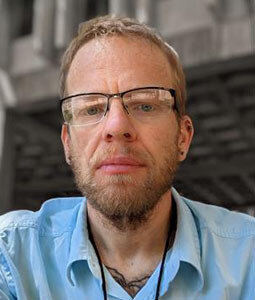Department of Sociology
Faculty and Staff Directory
jimi adams
| Title: | Professor |
| Department: | Sociology McCausland College of Arts and Sciences |
| Email: | jimi.adams@sc.edu |
| Phone: | 803-777-3123 |
| Resources: | Curriculum Vitae [pdf] personal website |

Bio
Broadly, Professor adams studies how networks constrain or promote the diffusion of information and/or diseases through populations. Much of this work has focused on HIV/AIDS and Covid-19 among populations in the US and Sub-Saharan Africa. Recently, his work has focused more on the integrative patterns and processes in problem-focused areas of science that draw from many academic disciplines (e.g., HIV/AIDS, demography, the environment). In addition, his work entails a focus on using social network theory to improve strategies used in the design and implementation of primary data collection projects.
Research
Department cluster: Populations & Health
Selected Publications (+ denotes mentored student)-
- +Kate Vinita Fitch, Molly Copeland, & jimi adams. 2024. “What Predicts Romantic Tie Reciprocation among a Sample of Adolescents?.” Social Networks 76: 203-208.
- jimi adams & Michał Bojanowski. 2023. “Do NBA Teams Avoid Trading Players within their Division?” Network Science 11(4): 657-669.
- jimi adams & Miranda J. Lubbers. 2023. “Social Network Data Collection: Principles and Modalities.” Chapter 40 in John McLevey, John Scott, & Peter J. Carrington (eds.) Sage Handbook of Social Network Analysis. SAGE.
- +Nicholas W. Landry & jimi adams. 2023. “On limitations of uniplex networks for modeling multiplex contagion.” PLoS One 18(1):e0279345.
- jimi adams, Elizabeth Lawrence, +Joshua Goode, David R. Schaefer, & Stefanie Mollborn. 2022. “Peer Network Dynamics of Adolescents’ Health Lifestyles.” Journal of Health & Social Behavior 63(1): 125-141.
- jimi adams, Ryan Light, & Nicholas Theis. 2020. “Mobilizing COVID-19 Science.” Contexts 19(4): 36-41.
- jimi adams, David R. Schaefer, & Andrea Vest Ettekal. 2020. “Crafting Mosaics: Person‐Centered Religious Influence and Selection in Adolescent Friendships.” Journal for the Scientific Study of Religion 59(1): 39-61.